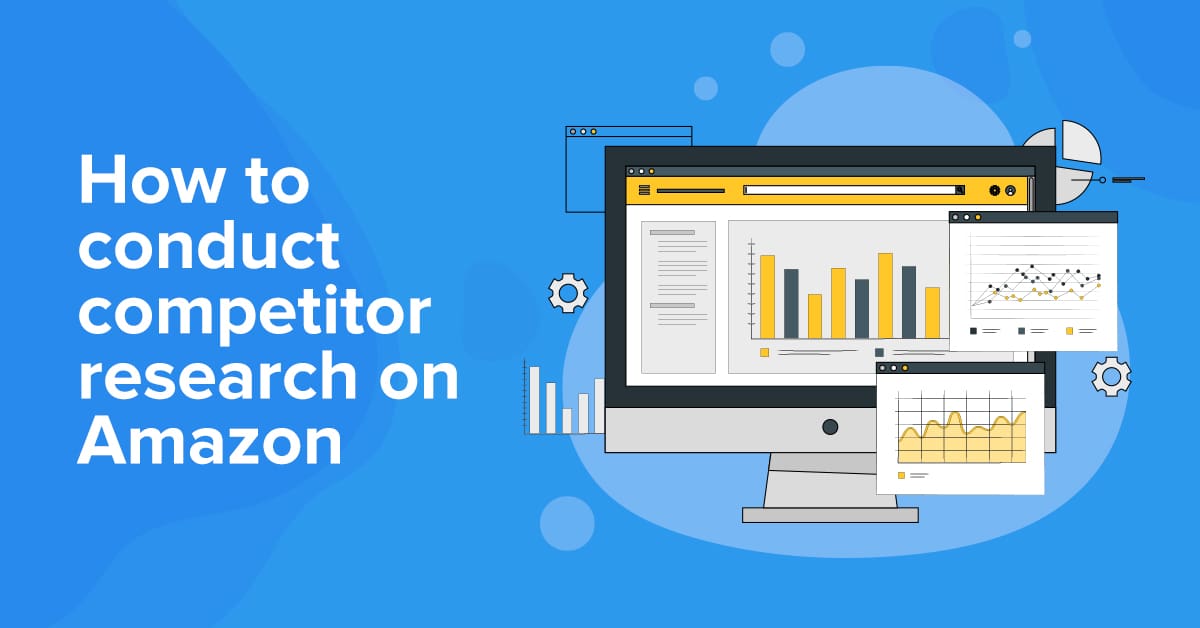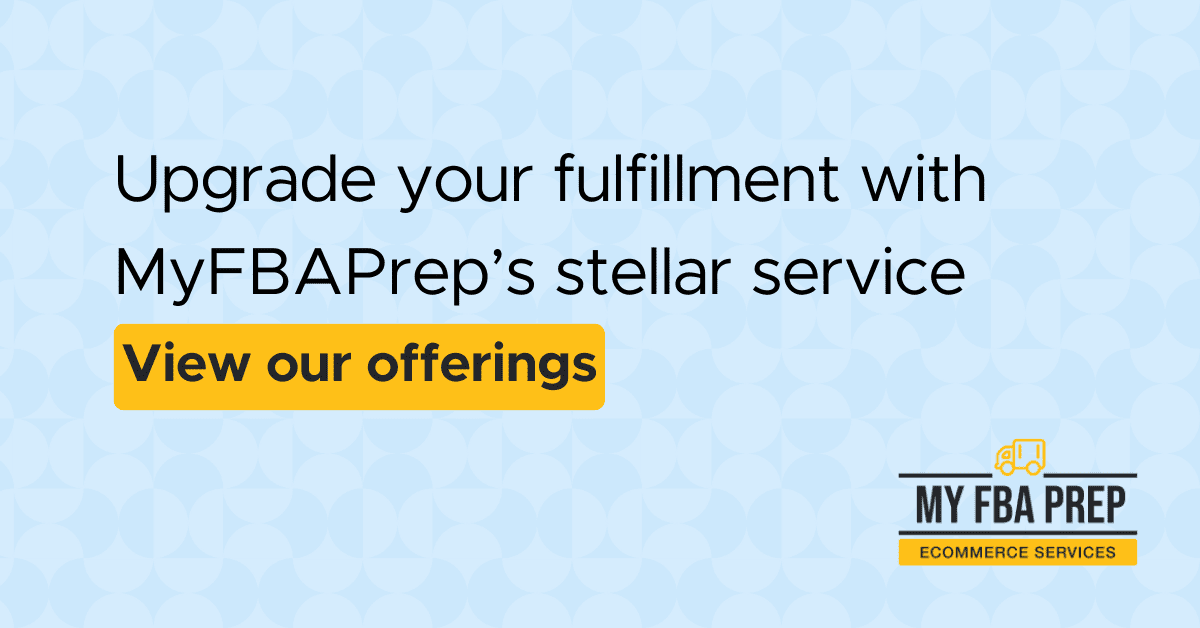
How to Conduct an Amazon Competitor Analysis

Competition is fierce in eCommerce, and understanding your competitors is essential to your business’s survival.
Amazon is the largest online marketplace, with over 300 million active customers worldwide. However, it’s also the major platform for a massive number of sellers — and you have to contend with this large pool to attract shoppers’ attention. By learning the ins and outs of your competitors, you can identify gaps in the market and stay ahead of changing trends.
A highly effective way to inform your pricing strategy, product offerings, marketing efforts, and customer service approach is to conduct an Amazon competitor analysis. Keep reading as we help you identify top competitors, assess their customer service and fulfillment processes, and learn from their strengths and weaknesses.
Identifying your top competitors
The purpose of running a competitive analysis is to examine your competition and collect essential data, such as:
- What successful strategies are your competitors employing?
- How can you enhance your own business tactics?
- What methods can you use to stand out against your competition?
The first step in the process is to identify your top competitors. To do this, analyze product listings and categories similar to yours. Look for retailers selling products that are the same as or similar to yours, then check their sales history, product features, and customer reviews.
Evaluate sales rank and customer reviews
Amazon’s sales rank is a powerful indicator of a product’s popularity. By evaluating the sales rank and customer reviews of your competitors’ products, you can gauge their market share and reputation.
Online reviews are especially critical, as 93% of consumers say they influence their purchasing decisions. Look for trends in customer feedback to understand what buyers value and hone in on any common complaints.
Look at price, product features, and brand reputation
Price, product features, and brand reputation are other factors to consider when identifying your top competitors. Look for retailers offering products at lower prices or with more advanced features than yours. These businesses may be capturing a significant portion of your target market.
Narrow your list
After following the above steps, you’ll have an extensive list of competitors. To shrink that number and gain the most valuable results from your analysis, prioritize sellers with strong results and conduct in-depth research on them.
For example, include sellers with Amazon’s Choice and Amazon Best Sellers products, representing top listings in each niche. Also, focus on sellers with multiple listings on the first page of search results.
Next, refine your list and categorize all sellers into three groups:
- Your primary competitors (i.e., companies selling products highly similar to yours or targeting the same audience)
- Businesses selling similar products to a different audience or offering slightly higher- or lower-end products than yours
- Companies selling products related to your offerings (for example, if you sell candles, this category may include companies selling incense burners)
Ideally, you should create a spreadsheet containing all your competitors, their category assignments, product lists, and essential details about them, including strengths and weaknesses. This organized approach will help you focus on the most relevant competitors and inform your strategic decisions.
Conducting an in-depth Amazon competitor analysis
Once you’ve determined your top competitors, you can conduct an in-depth analysis of their product listings.
Titles, descriptions, images, and keywords
Study your competitors’ product listings, focusing on aspects like titles, descriptions, images, and keywords. Assess how well they present their products and determine if they use Amazon SEO best practices.
- Titles: Compare the titles across various products, noting potential additions or omissions that could enhance their effectiveness. Consider the keywords competitors incorporate in their product titles to describe their offerings.
- Product descriptions: Reviewing product descriptions reveals insights into the essential information to include or omit.
- Images: Images are foundational to any Amazon listing, as people can’t see or touch your product in person. Strive to obtain the highest-quality images, taken at the best angles that show the product in the greatest detail. Examine the photos of your competitors’ products and note things that do and don’t work.
- Bullet points: These typically feature a product’s key selling points, making them worthy of close examination as well. Check out which benefits your competitors emphasize in their products and devise strategies to address those advantages within your own product bullet points.
- Keywords: Just like you, your competitors work hard to optimize their listings for target keywords. So, take a close look at their listings and see if they’re doing something you’ve missed. You can do this manually, but using a keyword research tool makes the whole process faster and easier.
Take note of any standout features or tactics your competitors employ and think about how you can implement them in your own listings.
Looking for more ways to improve your product listings? Check out MyFBAPrep’s 3 Simple Strategies for Show-Stopping eCommerce Product Listings.
Pricing strategies
When making a purchase decision, an overwhelming 80% of online shoppers consider price to be the most critical factor. Understanding your competitors’ pricing strategies is thus essential to stay competitive on Amazon.
Examine their pricing history and any patterns in price changes. This will help you identify opportunities to undercut your competition or position your products as premium alternatives.
Matching your competitor’s pricing is a straightforward and low-risk approach, but it may diminish the perceived value of your products in your customers’ eyes. You could leave money on the table by engaging in a “race to the bottom.”
A more effective avenue is leveraging apps that track competitor pricing and implement dynamic pricing for your products. These tools automatically adjust prices to optimize profit margins in response to changes in your competitors’ average prices. This way, you can align your pricing strategy with your customers’ perceived value while remaining competitive in the market.
Advertising strategies
Before initiating Amazon ad campaigns, examine your competitors’ advertising strategies on the platform. To stay competitive, your ads must have a similar or slightly higher cost-per-click than other sellers in your niche.
Employ appropriate tools to assess other sellers’ Amazon ad campaigns and discover which keywords they’re targeting and their corresponding search volumes.
Additionally, investigate whether your competitors use Google Shopping ads. You can do this easily by inputting one of your primary keywords into Google and checking for Amazon product ads within the Google Shopping ads section.
If you find no such ads, you can capitalize on that opportunity by running ads for your products. However, be aware this approach carries some risk, as competitors might avoid Google Shopping ads for certain reasons.
Assessing competitor customer service and fulfillment
Customer service and fulfillment are critical factors in eCommerce, and assessing your competitors’ performance in these areas can help you solidify your own.
Customer support
Satisfactory customer support is critical to maintain a positive reputation on Amazon. Determine your competitors’ response times to customer inquiries and the quality of their support. Look for consumer reviews that talk about their performance as well for an honest overview.
If your competitors consistently receive praise for their customer service, consider whether you can improve your support to match or exceed their standards.
Fulfillment methods and shipping policies
Analyze your competitors’ fulfillment methods to understand their efficiency, cost-effectiveness, and overall impact on customer satisfaction.
First, determine which fulfillment methods your competitors use, such as Fulfillment by Amazon (FBA), Seller Fulfilled Prime (SFP), or Fulfillment by Merchant (FBM). Then, examine their shipping policies, including fulfillment costs, delivery times, and free shipping offers. This reveals how their fulfillment methods affect customers’ purchase decisions.
Look for signs of effective inventory management like consistent stock levels and minimal out-of-stock incidents as well.
If possible, purchase a product from your competitor to evaluate their packaging and unboxing experience firsthand. Pay close attention to the packaging quality, branding, and overall presentation, as these factors can impact buyer perception and satisfaction.
Determine whether their approaches are more efficient or cost-effective and consider adjusting your fulfillment strategy.
Learning from competitor strengths and weaknesses
Conducting a thorough competitor analysis will uncover areas where your business can improve. Use this information to develop a plan for addressing these weaknesses and enhancing your overall performance on Amazon.
Leverage competitor strengths
Take note of your competitors’ strengths and consider how you can integrate them into your own business strategy.
This may involve updating your marketing tactics, refining your product offerings, or improving customer service. Be prepared to innovate and find ways to gain an edge in the market.
Adapt and innovate based on competitor weaknesses
Don’t focus solely on your competitors’ strengths; their weaknesses can also provide valuable insights.
Identify areas where your competitors are underperforming and take advantage of those gaps to differentiate your business. Innovate and adapt your strategy to capitalize on these opportunities and set your brand apart.
Tools for Amazon seller competitor analysis
Several tools are available to help you conduct an Amazon competitor analysis effectively.
While each one offers unique features and benefits, the best selection for you will depend on your specific needs and budget. Here are some popular tools to consider for your research:
- Jungle Scout: Jungle Scout is an all-in-one platform for Amazon sellers, providing extensive market and competitor data. With features like product tracking, keyword research, and sales estimates, Jungle Scout can help you keep a close eye on your competition.
- Helium 10: Helium 10 is another comprehensive tool offering a suite of features for product research, keyword analysis, and competitor tracking.
- AMZScout: AMZScout’s range of Amazon seller tools includes a Chrome extension that allows you to analyze competitor data directly on Amazon’s website. With features like product tracking, sales estimates, and keyword research, AMZScout can provide valuable insights into your competition.
- Keepa: Keepa is a powerful tool for tracking Amazon product prices, sales rank, and other data. With Keepa’s historical price data and sales rank tracking, you can monitor your competitors’ pricing strategies and make informed decisions about your own pricing.
- Viral Launch: Viral Launch is a comprehensive Amazon seller platform with tools for product research, keyword analysis, and competitor tracking.
- SellerApp: SellerApp is another all-in-one platform for Amazon sellers that provides extensive market and competitor data. It has several impressive elements like product tracking, keyword research, and sales estimates.
- FeedbackWhiz: FeedbackWhiz is designed to help Amazon sellers manage their customer feedback and reviews. By tracking your competitors’ reviews and ratings, you gain insight into their customer service performance and identify areas where you can improve your own customer support.
Before making your choice, consider your specific needs, budget, and the tool’s features. Some platforms offer free trials or limited access to their features to help you determine the best fit.
Wrapping up — Gain an edge with Amazon competitor research
Conducting a thorough Amazon competitor analysis is essential for eCommerce retailers to stay ahead of other sellers.
You can make better informed decisions about your business by identifying your top competitors, analyzing their strategies, and learning from their strengths and weaknesses. The eCommerce landscape is constantly evolving, so it’s crucial to watch these fluctuations and adapt your plans.
Learn continuously from your competition and adopt the right tools to maintain a competitive edge on Amazon and position your business for success.


